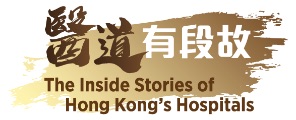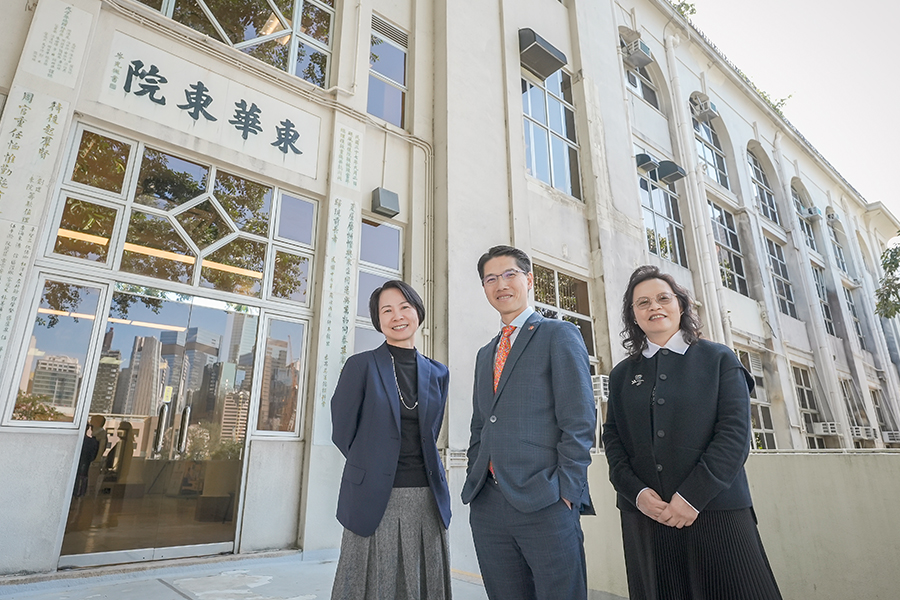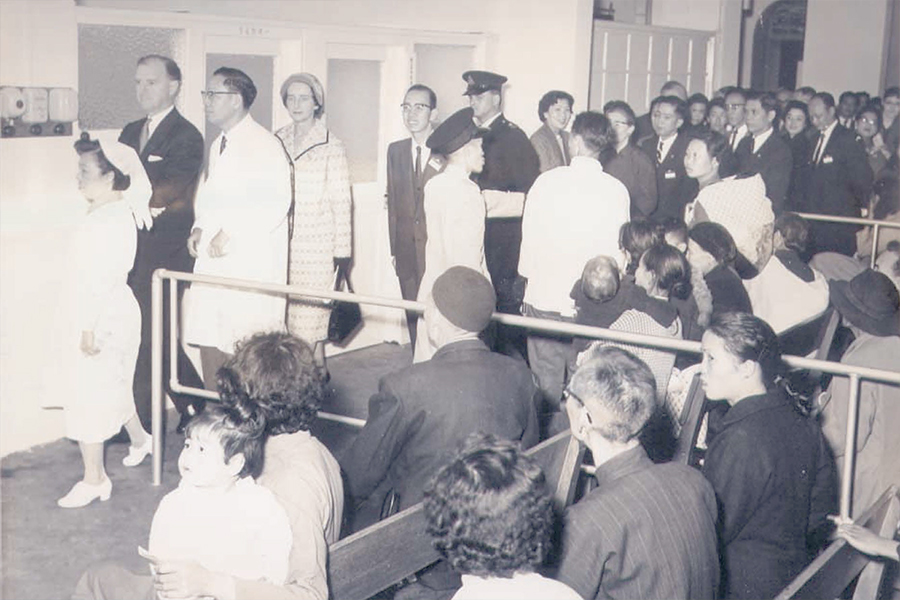
TWEH’s 95th anniversary: A historic building with a modern vision
 Nestling in a peaceful corner of So Kon Po in Causeway Bay, Tung Wah Eastern Hospital (TWEH) has a history spanning 95 years and the aura of a hidden gem amid the hustle and bustle of the city. Former Department Operations Manager of the Department of Medicine and Rehabilitation Tang Siu-wai recalls her first impression when she joined the hospital in 1986, saying: “I couldn’t help but think ‘Is there really a hospital here?’” She soon discovered a modern facility behind the hospital’s historic façade. “While the exterior may look old, the equipment inside is advanced, and my colleagues were innovative and bold in trying new ideas,” she says.
Nestling in a peaceful corner of So Kon Po in Causeway Bay, Tung Wah Eastern Hospital (TWEH) has a history spanning 95 years and the aura of a hidden gem amid the hustle and bustle of the city. Former Department Operations Manager of the Department of Medicine and Rehabilitation Tang Siu-wai recalls her first impression when she joined the hospital in 1986, saying: “I couldn’t help but think ‘Is there really a hospital here?’” She soon discovered a modern facility behind the hospital’s historic façade. “While the exterior may look old, the equipment inside is advanced, and my colleagues were innovative and bold in trying new ideas,” she says.
Since the 1990s, TWEH has undergone a gradual transformation and developed rehabilitation specialties, including pulmonary, neurology, neurosurgery, cardiology and orthopaedics. Tang volunteered to be a pioneer of the rehabilitation services and witnessed the establishment of the Rehabilitation Day Hospital in 1999. Whenever new services were introduced, she noted, her colleagues would rise to the challenge. During the COVID-19 epidemic, for instance, some colleagues supported the North Lantau Hospital Hong Kong Infection Control Centre and learnt how the electronic vital signs recording system (eVital) enhanced efficiency. The hospital immediately formed a task force to promote the system, producing videos and designing simulated training exercises. After nine months of effort, TWEH became the first rehabilitation hospital to fully adopt and apply the eVital system.
 Rehabilitation services help patients regain their ability to look after themselves so they can reintegrate into society. Tang remembers a young patient in her first year of secondary school who was diagnosed with multiple sclerosis during her summer break and had to rely on a wheelchair for mobility. Her school suggested transferring her to special school, leaving her mother dismayed. Tang and her team contacted the school to discuss the situation and successfully ensured she was able to stay on in her school. They continued to provide the patient with rehabilitation support, giving her motivation to persevere. Years later, the young girl was able to live independently. She has found a job and now leads a healthy life. “TWEH is more than just a hospital,” Tang reflects. “It’s like a friend to the community – a caring neighbour who provides support and assistance to the public.”
Rehabilitation services help patients regain their ability to look after themselves so they can reintegrate into society. Tang remembers a young patient in her first year of secondary school who was diagnosed with multiple sclerosis during her summer break and had to rely on a wheelchair for mobility. Her school suggested transferring her to special school, leaving her mother dismayed. Tang and her team contacted the school to discuss the situation and successfully ensured she was able to stay on in her school. They continued to provide the patient with rehabilitation support, giving her motivation to persevere. Years later, the young girl was able to live independently. She has found a job and now leads a healthy life. “TWEH is more than just a hospital,” Tang reflects. “It’s like a friend to the community – a caring neighbour who provides support and assistance to the public.”
Like its rehabilitation services, the hospital’s Ophthalmology Department also closely addresses the evolving needs of the community, the Tung Wah Group of Hospitals (TWGHs) Lo Ka Chow Memorial Ophthalmic Centre opened at the hospital in 1991. Department Operations Manager (Ophthalmology) Loretta Siu has been at TWEH for over 32 years and had just joined during a period of rapid expansion in ophthalmology services. Today, demand for those services is still growing. “With the ageing population in Hong Kong’s Eastern District, more and more patients require ophthalmology care,” Siu explains. “That’s why, in 2021, we integrated services across the Hong Kong East Cluster, TWEH managed 80% of ophthalmology specialist outpatient cases and all routine new cases in the cluster.”
 Ophthalmology services focus on patient education, particularly before and after surgery. Patients are taught how to care for themselves and many require regular follow-up appointments for treatment. “Patients become very familiar with us, and we often chat like friends,” Siu says. As well as the trust between patients and staff, Siu also values the strong camaraderie among colleagues. “We are a small hospital and we are like a family,” she says. “Every time we launch a new service, everyone works together with full dedication and enthusiasm.”
Ophthalmology services focus on patient education, particularly before and after surgery. Patients are taught how to care for themselves and many require regular follow-up appointments for treatment. “Patients become very familiar with us, and we often chat like friends,” Siu says. As well as the trust between patients and staff, Siu also values the strong camaraderie among colleagues. “We are a small hospital and we are like a family,” she says. “Every time we launch a new service, everyone works together with full dedication and enthusiasm.”
Hospital Chief Executive Dr Lau Ka-hin was drawn to the hospital’s architecture when he first arrived. He was then impressed by the enthusiasm of colleagues who work without limits and get with the programme. “TWEH colleagues are passionate and open-minded about incorporating new technologies and services into daily operations. Looking ahead, I hope TWEH will continue its journey toward a smart hospital, offering patients even better quality care,” says Dr Lau.